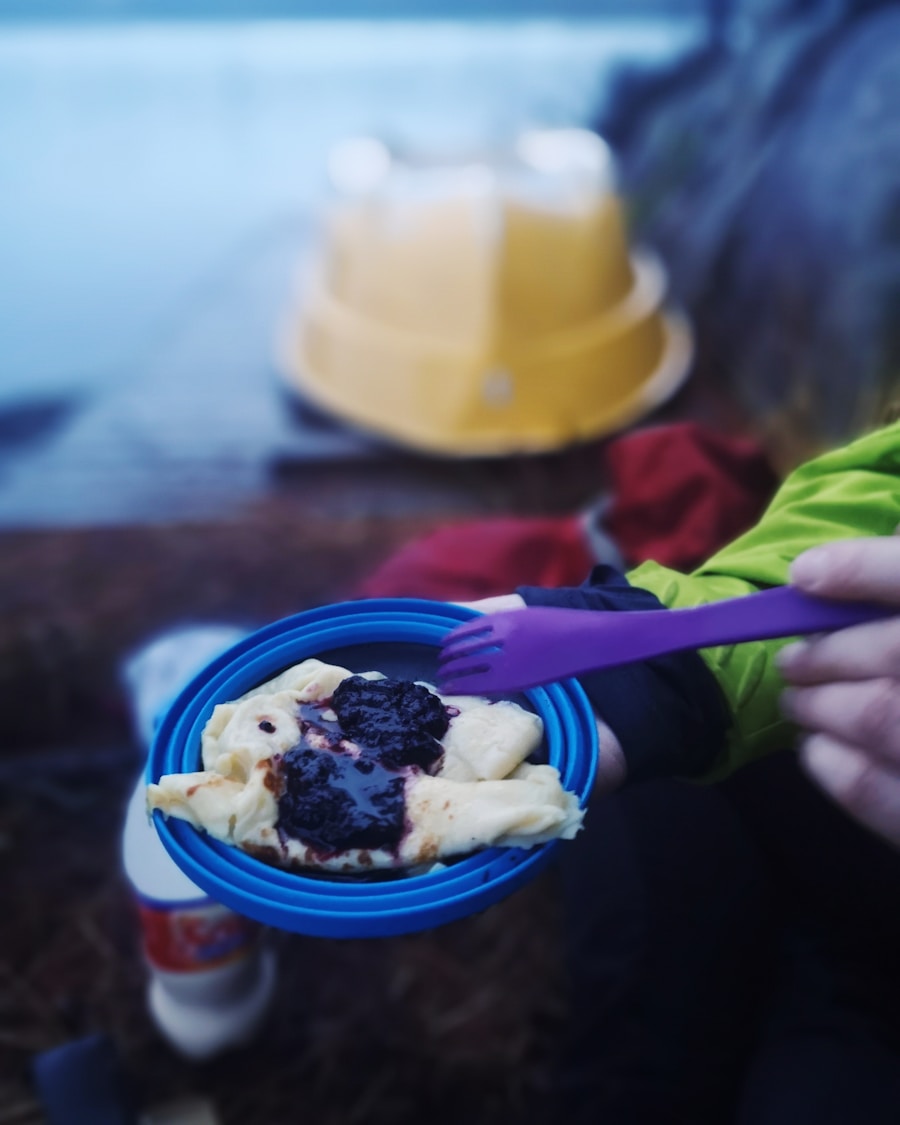When embarking on a hiking adventure, the significance of nutrition cannot be overstated. Proper nutrition serves as the foundation for a successful trek, influencing not only physical performance but also mental clarity and overall enjoyment of the experience. The body requires a balanced intake of macronutrients—carbohydrates, proteins, and fats—to sustain energy levels, support muscle function, and maintain endurance throughout the journey.
A well-planned diet can mean the difference between a rewarding hike and one that leaves you fatigued and frustrated. Before hitting the trail, it is essential to assess your nutritional needs based on the duration and intensity of your hike. For instance, a day hike may require different caloric intake compared to a multi-day backpacking trip.
Carbohydrates are particularly crucial as they provide the quick energy needed for strenuous activities. Foods rich in complex carbohydrates, such as whole grains and legumes, should be prioritized in the days leading up to your hike. Additionally, incorporating healthy fats from sources like nuts and avocados can help sustain energy levels over longer periods, making it vital to consider both immediate and long-term nutritional strategies.
Key Takeaways
- Proper nutrition is essential for preparing for a hiking trail
- Trail mix and energy bars are convenient and provide sustained energy
- Hydration is crucial for endurance and performance on the trail
- Dehydrated meals are lightweight and nutritious for backpacking
- Fresh fruits and vegetables are important for a well-rounded hiking diet
Trail Mix and Energy Bars: Portable Snacks for Sustained Energy
Trail mix and energy bars have become staples among hikers for good reason. These portable snacks are not only convenient but also packed with essential nutrients that provide sustained energy during long treks. Trail mix typically combines nuts, seeds, dried fruits, and sometimes chocolate or granola, creating a balanced snack that offers a mix of carbohydrates, proteins, and healthy fats.
The variety in trail mix allows hikers to customize their snacks according to personal preferences and dietary restrictions, making it an adaptable choice for anyone hitting the trails. Energy bars, on the other hand, are specifically formulated to deliver concentrated nutrition in a compact form. Many brands offer bars that cater to various dietary needs, including gluten-free, vegan, and high-protein options.
When selecting energy bars, it is crucial to read labels carefully; some bars may contain excessive sugars or artificial ingredients that can lead to energy crashes.
Opting for bars made with whole food ingredients—such as oats, nut butters, and natural sweeteners—can provide a more stable energy source. Both trail mix and energy bars are excellent choices for quick refueling during breaks on the trail, ensuring that you maintain your stamina throughout your hike.Hydration: The Key to Endurance and Performance

Hydration is an often-overlooked aspect of hiking preparation that plays a critical role in endurance and performance. The human body is composed of approximately 60% water, and maintaining proper hydration levels is essential for optimal physiological function. Dehydration can lead to fatigue, decreased coordination, and impaired cognitive function—all of which can significantly impact your hiking experience.
Therefore, understanding how much water to consume before and during your hike is vital for sustaining energy levels. The amount of water needed can vary based on factors such as temperature, humidity, altitude, and individual sweat rates. A general guideline suggests drinking about half a liter (17 ounces) of water per hour of moderate activity in moderate temperatures.
However, this can increase in hotter conditions or during more strenuous hikes. Carrying a hydration system—such as a water bladder or multiple water bottles—ensures that you have access to water throughout your journey. Additionally, electrolyte-rich drinks can be beneficial during long hikes to replenish lost minerals through sweat.
By prioritizing hydration, hikers can enhance their endurance and overall performance on the trail.
Dehydrated Meals: Lightweight and Nutritious Options for Backpacking
| Brand | Calories per Serving | Protein per Serving (g) | Price per Serving |
|---|---|---|---|
| Mountain House | 250 | 10 | 8.99 |
| Backpacker’s Pantry | 320 | 15 | 9.50 |
| Good To-Go | 280 | 12 | 10.99 |
For those embarking on multi-day backpacking trips, dehydrated meals present an ideal solution for maintaining nutrition without the burden of heavy food supplies. These meals are designed to be lightweight and compact while still providing essential nutrients needed for recovery and energy replenishment after long days on the trail. Dehydrated meals typically consist of a variety of ingredients such as grains, vegetables, proteins, and seasonings that are cooked and then dried to remove moisture.
One of the significant advantages of dehydrated meals is their ease of preparation. Most require only hot water to rehydrate, making them convenient for cooking at camp after a long day of hiking. Brands like Mountain House and Backpacker’s Pantry offer an array of options ranging from hearty stews to pasta dishes, catering to various tastes and dietary preferences.
It’s important to consider the nutritional content when selecting dehydrated meals; look for options that provide a balance of carbohydrates, proteins, and fats to support recovery and energy needs.
Fresh Fruits and Vegetables: Incorporating Whole Foods into Your Hiking Diet
While dehydrated meals and packaged snacks are convenient for hiking trips, incorporating fresh fruits and vegetables into your diet can provide essential vitamins and minerals that support overall health. Fresh produce is rich in antioxidants, which help combat oxidative stress caused by physical exertion. Fruits like apples, oranges, and bananas are not only hydrating but also provide quick sources of carbohydrates for energy boosts during hikes.
Vegetables can be more challenging to pack due to their perishable nature; however, options like carrots, bell peppers, and cherry tomatoes can withstand some time in a backpack without spoiling. These whole foods contribute fiber to your diet, aiding digestion and promoting satiety during long hikes. Additionally, fresh produce can enhance meal variety and flavor when combined with other trail foods.
For example, adding sliced cucumbers or bell peppers to a wrap or sandwich can elevate a simple meal into something more enjoyable while providing necessary nutrients.
Protein-Packed Options: Fueling Your Muscles for Long Days on the Trail

Protein is a crucial macronutrient for hikers as it plays a vital role in muscle repair and recovery after strenuous activity. Consuming adequate protein helps prevent muscle breakdown during long hikes while also supporting overall strength and endurance. For those who are active on the trails, incorporating protein-rich foods into your diet is essential for maintaining energy levels throughout the day.
There are numerous protein-packed options suitable for hiking diets. Jerky—whether beef, turkey, or plant-based—offers a convenient source of protein that is lightweight and shelf-stable. Additionally, nut butters provide healthy fats along with protein; they can be spread on whole-grain crackers or fruit for a satisfying snack.
For those looking for vegetarian or vegan options, legumes such as chickpeas or lentils can be included in dehydrated meals or salads prepared before the hike. By ensuring that your hiking diet includes sufficient protein sources, you can support muscle function and enhance your overall performance on the trail.
Smart Eating Strategies: How to Plan and Pace Your Meals for Maximum Energy
Planning meals strategically is key to maximizing energy levels during hikes. Rather than consuming large meals infrequently, it is often more effective to eat smaller portions at regular intervals throughout the day. This approach helps maintain stable blood sugar levels and prevents energy crashes that can occur after consuming large amounts of food at once.
Packing snacks that are easy to access while on the move allows hikers to refuel without needing to stop for extended periods. Timing is also an important consideration when planning meals on the trail. Consuming carbohydrates before starting your hike can provide an initial energy boost, while protein-rich snacks during breaks can aid in muscle recovery.
It’s beneficial to have a mix of quick-energy foods—like trail mix or energy bars—and more substantial options—such as wraps or sandwiches—available throughout the day. By pacing your meals effectively and choosing nutrient-dense foods that align with your activity level, you can sustain energy levels and enhance your overall hiking experience.
Post-Hike Recovery: Refueling and Repairing Your Body After a Long Day of Hiking
After completing a long day on the trails, refueling your body is essential for recovery and preparation for future hikes. The post-hike period is when your body begins repairing muscle tissue that may have been stressed during physical activity; therefore, consuming a balanced meal rich in carbohydrates and protein within 30 minutes to two hours after finishing your hike is ideal. This timeframe allows your body to replenish glycogen stores depleted during exercise while also providing the necessary building blocks for muscle repair.
A well-rounded post-hike meal might include whole grains like quinoa or brown rice paired with lean proteins such as grilled chicken or tofu along with plenty of vegetables. Smoothies made with fruits, yogurt or plant-based milk, and protein powder can also serve as an effective recovery option due to their ease of digestion and nutrient density. Additionally, rehydrating with water or electrolyte drinks is crucial after sweating throughout the hike; this helps restore fluid balance in the body.
By prioritizing post-hike nutrition, you set yourself up for success on future adventures while promoting overall health and well-being.
When planning a hiking trip, it’s important to consider not only what gear to bring but also what food to pack. A related article on compact binoculars for hiking highlights the importance of having the right equipment to enhance your outdoor experience. Just like having the right gear, choosing the right snacks and meals can make a big difference in your energy levels and overall enjoyment while on the trail. Be sure to pack lightweight, nutrient-dense foods that are easy to eat on the go and provide sustained energy for your adventure.
FAQs
What are some good options for snacks while hiking?
Some good options for snacks while hiking include trail mix, energy bars, jerky, dried fruit, nuts, and granola bars. These snacks are lightweight, easy to pack, and provide a good source of energy.
What are some lightweight meal options for hiking?
Some lightweight meal options for hiking include dehydrated meals, instant noodles, couscous, and freeze-dried meals. These options are easy to prepare and provide a good source of nutrients and energy for hikers.
How can I stay hydrated while hiking?
To stay hydrated while hiking, it’s important to drink plenty of water throughout the day. Consider bringing a hydration pack or water bottles with a water purification system to ensure access to clean water during the hike.
What are some considerations for food safety while hiking?
When hiking, it’s important to consider food safety to prevent foodborne illnesses. Pack perishable foods in a cooler or insulated bag, store food at the appropriate temperature, and practice good hygiene when handling and preparing food.
Are there any foods to avoid while hiking?
Foods that are prone to spoilage or melting, such as dairy products, mayonnaise-based salads, and chocolate, should be avoided while hiking. These foods can pose a risk of foodborne illness or become messy and difficult to consume on the trail.
